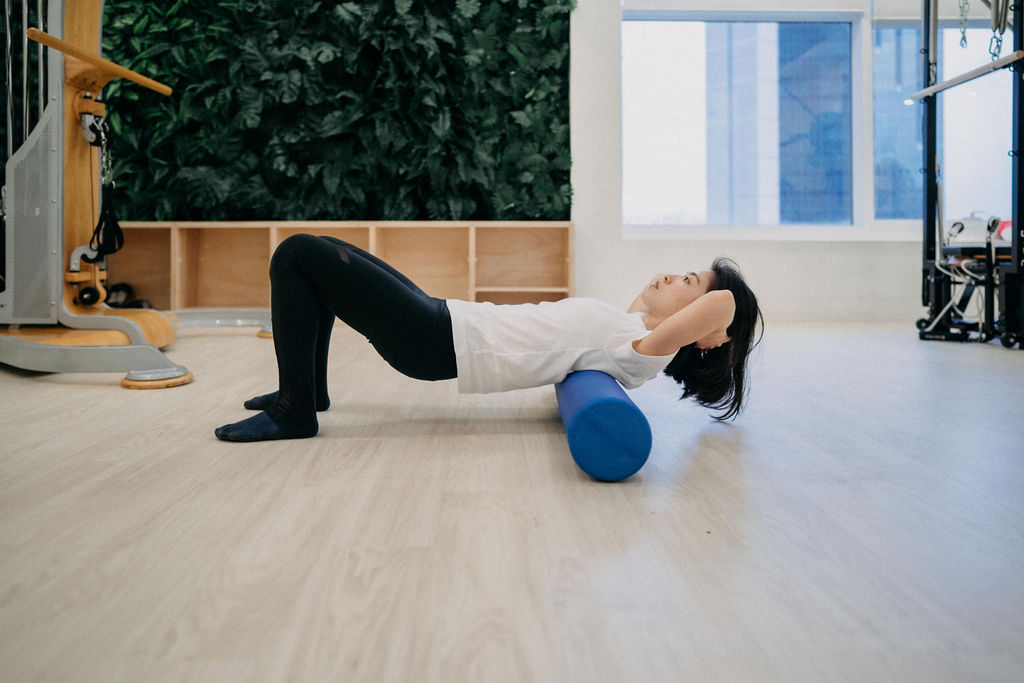
Neck & Upper Back Pain

The most common complaint we’ve been hearing this circuit breaker, has been that of neck and shoulder pain. Prolonged neck and upper back strain can result in wear and tear of the underlying structures resulting in degenerative disc disease and compression of the spinal cord. In this series, we explain the most common causes of neck and shoulder pain, and over the next few weeks, will publish some videos and articles of exercises and self massage techniques to help nip the problem in the bud.
Poor Mobility & Articulation Of The Upper Back
Often with neck pain, the problem doesn’t actually lie in the neck, but rather the upper back! Our spine should be able to move in SIX directions and in any combination of the six directions – flexion, extension, side bend left and right, clockwise and counterclockwise rotation, rotation with extension/flexion, side bend with flexion/extension, side bend with rotation.
When our upper back (thoracic spine) loses mobility in any of the directions, our neck (cervical spine) and lower back (lumbar spine) takes up the job of having to do extra work to compensate for the loss in range of motion of the upper back. This results in that achy overworked feeling you have in your neck and lower back!
We often try stretching our neck but achieve only slight relief. That is because it is not our neck muscles that are tight and shortened but rather our upper back and chest muscles that need the stretch. Our neck muscles are often overworked and fatigued and need a massage to relieve tension, fluid retention, stiffness and improve circulation.
Poor Ergonomics and Posture
Working at a desk is a common cause of back and neck pain, often because you accommodate to your workstation rather than the other way around. For instance, many people strain to see a computer monitor that is too far away, too low, too high, too small or too dim. This compromises good posture.
And then there’s also the infamous ‘text neck’ – head forward, shoulders rounded, and back slumped.
The average human head weighs almost 5.4 kilograms, the equivalent of a bowling ball! When your neck is bent to 45 degrees, your head exerts nearly 23 kilograms of force on your neck. Both text neck and poor desk ergonomics result in compressed and tightened muscle, tendon, and ligament structures in the front of the neck while lengthening the muscles, tendon, and ligament structures behind the neck.
There’s lots of simple and effective ways to fix this and we have made a short video with Breathe instructor and physiotherapist Ashley to share some with you!
Weak Core
Your neck doesn’t exist in isolation. The force exerted by the effective weight of the head is distributed all the way down along the spine and vice versa. A weak core is unable to support the neck well, resulting in the muscles around your neck and upper back being overworked. A weak core also changes the alignment of your body – your lower back sways forward, upper back rounds resulting in your shoulder and neck rolling forward.
Maintaining your core stability, which involves a compound system of muscles and ligaments around your torso, is essential in preventing neck and upper back pain.
Breathing is a great way to learn to activate your core and you can find out more about WHAT the core is and how to activate it with just your breath here.
Share — Facebook Twitter
 Whatsapp
Whatsapp


